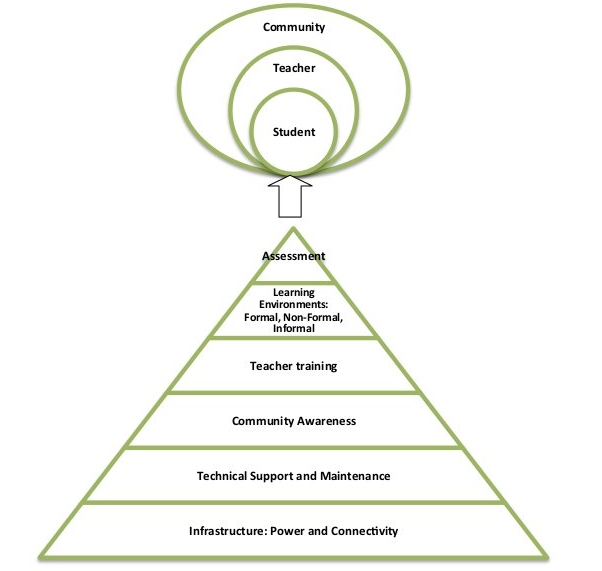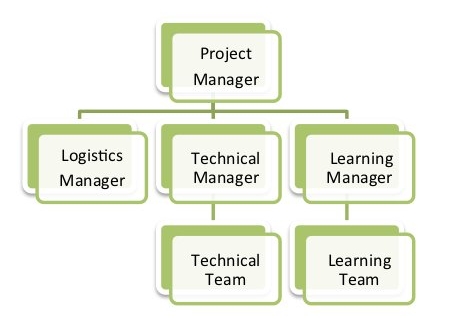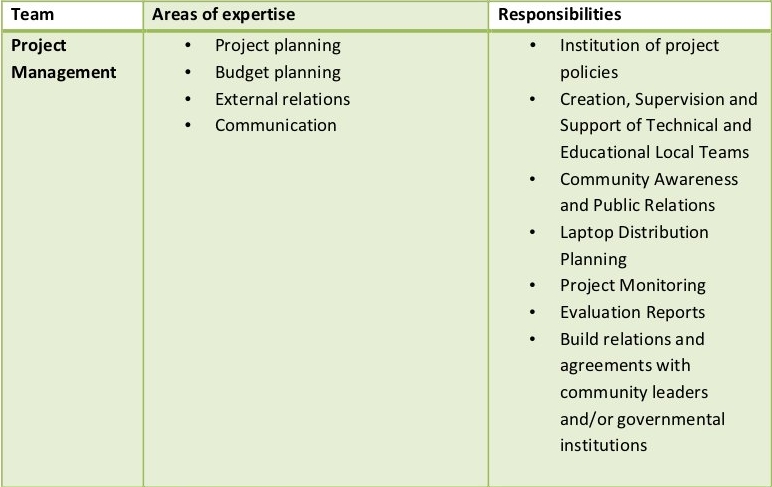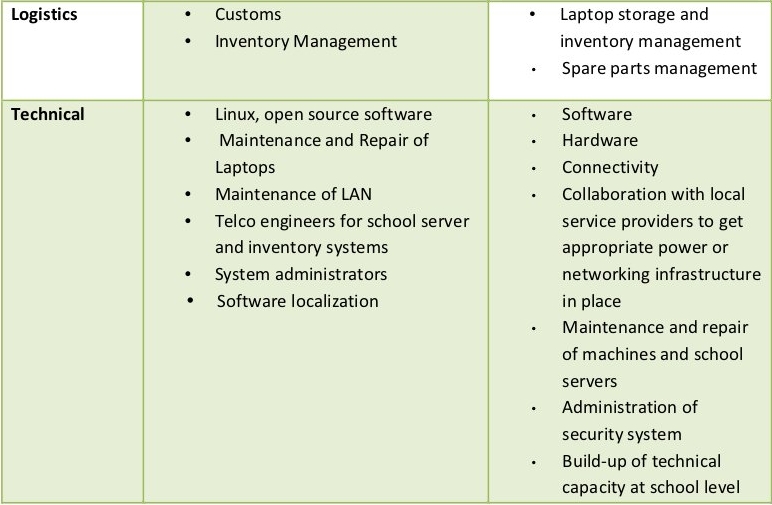Deployment Guide 2011/Project Implementation
OLPC Deployment Guide 2011: Project Implementation
An OLPC project has a direct impact on children and their learning outcomes. Other actors that are equally impacted by the project are the school systems (especially teachers), families, and communities as a whole. It is important to consider all of these actors when defining objectives and implementation strategies. Various domains must be included in such strategies in order to ensure sustainability of the project. The pyramid below illustrates the hierarchy of these domains.
The base of the pyramid is infrastructure, which refers to providing access not only to the laptop, but also to the electrical grid (or other alternative power source), to the Internet, and to school servers. Without this base, movement towards the top of the pyramid will be very difficult and will limit the outcomes expected to be achieved with the project. The top tier refers to two types of assessments.
Assessments of the first type measure the project’s impact, including student learning and other objectives, such as social effect and school improvement. Assessments of the second type identify areas for improvement of project implementation. The elements of the pyramid are meant to be in a constant cycle where the top always gives feedback to the rest of the domains.
Core Team
For successful implementation of the OLPC project, we highly recommended deployments to recruit and build a local team with skills in: managerial, logistics, technical, and educational fields. The term we use to refer to this team is the “Core Team”. This team will serve as the interface between the project and OLPC.
We advise hiring a project manager with experience in: project and budget planning, external relations and communication. This manager is expected to plan and coordinate operations, as well as to supervise the different departments involved in the project. In addition to managerial skills it is preferable that the potential manager has a background in technical and/or educational fields. The project manager should take on the selection of the core team members he will manage. The following organizational chart for the Core Team is recommended:
For large deployments (>50,000 units) we consider a vital requirement to comply with all members mentioned in the organizational chart. Local leaders should be hired as educational/learning and technical managers to coordinate matters related to their area of expertise. A logistics coordinator should be in charge of laptop storage, inventory and spare parts management. For smaller deployments (<2,500 units) the logistics manager’s tasks can be performed by the technical and/or the project manager.
The following chart provides additional information on the responsibilities and required skills of the Core Team members:




